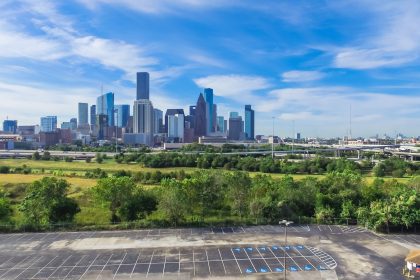In Newark, New Jersey, the dream of affordable housing feels increasingly out of reach for many families in 2025. Across four key neighborhoods, rent increases have surged, tightening financial pressures and altering the rhythm of daily life. From grocery budgets to school supplies, every expense now competes with the rising cost of keeping a roof overhead.
1. Ironbound: A vibrant hub feels the pinch
The Ironbound, known for its lively streets and Portuguese bakeries, has long been a haven for working families. Its brick row houses and bustling markets draw generations who value community ties. Yet, in 2025, rents here have climbed sharply, with one-bedroom apartments averaging $1,800 monthly, up 12% from 2023. For families earning Newark’s median income of $45,000, this swallows nearly half their take-home pay, far above the recommended 30% housing threshold.
The ripple effects touch every corner of life. Parents skip date nights to cover lease renewals, while kids share bedrooms as families downsize to cheaper units. Local businesses, from delis to hair salons, notice slower sales as customers tighten belts. Some residents turn to side hustles, like driving for ride-share apps, to bridge gaps, but long hours strain family time. Despite the gloom, Ironbound’s spirit endures—neighbors swap childcare to save costs, and community centers host free workshops on budgeting, fostering hope amid hardship.
2. Central Ward: Dreams deferred in historic blocks
Central Ward’s tree-lined streets, dotted with churches and community gardens, carry Newark’s rich history. Families here prize its cultural depth and proximity to downtown jobs. But rent hikes have cast a shadow, with two-bedroom units now averaging $2,100, a 15% jump since 2022. For single-parent households, common in this area, the math doesn’t add up—many spend over 40% of their income on rent, leaving little for emergencies or savings.
Daily sacrifices mount. Meals lean on rice and beans to stretch dollars, and after-school programs get cut as fees compete with utility bills. Public transit, a lifeline for non-drivers, eats into budgets as fares rise with inflation, pegged at 3.8% in 2025. Residents cope by pooling resources—families share bulk grocery runs or co-sign leases to secure better rates. Community resilience shines through tenant groups that meet monthly, swapping tips on navigating housing aid or avoiding eviction, keeping faith in brighter days.
3. North Ward: Tight budgets in a growing area
North Ward, home to Branch Brook Park’s cherry blossoms, blends suburban calm with urban access. Its apartments and modest homes attract families seeking space and safety. However, 2025 brings rental woes, with three-bedroom units hitting $2,500 monthly, up 10% in two years. For families with dual incomes averaging $60,000, rent consumes a third of earnings, squeezing plans for college funds or vacations.
The strain reshapes routines. Kids’ sports leagues lose players as registration costs vie with rent payments, and home repairs linger as savings dwindle. Local diners see fewer weekend crowds, reflecting cautious spending. To adapt, some families take in roommates, splitting costs but sacrificing privacy. Others scour city programs for relief, though aid applications often snag on red tape. Yet, North Ward’s unity holds firm—block associations organize clothing drives, and churches offer free tax clinics, easing burdens one step at a time.
4. South Ward: Rising costs test community bonds
South Ward’s sprawling neighborhoods, anchored by schools and corner stores, foster tight-knit ties. Families here, many long-term residents, cherish its sense of belonging. But rent increases have jolted stability, with one-bedroom apartments now at $1,600, a 14% rise since 2023. For retirees on fixed pensions, often under $30,000 annually, or young families starting out, this hike pinches hard, forcing tough choices between rent and healthcare.
Life adjusts in quiet ways. Grandparents delay prescriptions to cover grandchildren’s school supplies, and potlucks replace restaurant outings. Carpooling grows as gas prices, up 5% from last year, bite deeper. Residents fight back with ingenuity—some barter skills, like tutoring for home repairs, to save cash. Community gardens, a South Ward staple, expand to offset grocery costs, and local leaders push for rent stabilization, though progress lags. The area’s heart persists, with neighbors checking in, ensuring no one faces the struggle alone.
The bigger picture
Newark’s rent crisis mirrors national trends but hits harder in a city rebuilding its economic core. In 2025, urban redevelopment, fueled by new corporate offices and transit hubs, drives property values up, pushing landlords to raise rates. Inflation, hovering near 4%, inflates everything from maintenance fees to insurance, which owners pass to tenants. Federal housing aid, like Section 8 vouchers, covers fewer families as waitlists stretch years—only 15,000 of Newark’s 120,000 households benefit. Gentrification, creeping into Ironbound and Central Ward, lures wealthier renters, nudging out locals who built these communities.
Beyond dollars, the toll is emotional. Families feel uprooted, torn between staying in beloved neighborhoods and seeking cheaper suburbs. Kids switch schools as parents relocate, disrupting friendships. Yet, Newark’s fabric—woven from shared meals, street festivals, and porch chats—resists fraying. The four neighborhoods here, though strained, hold stories of endurance, where every dollar saved or favor traded strengthens bonds.
Paths forward
Survival demands creativity. Families lean on libraries for free Wi-Fi to hunt for aid or jobs, cutting internet bills. Some negotiate leases, locking in rates before hikes hit, though success varies. City initiatives, like tax breaks for low-income renters, offer hope but move slowly—only 2,000 applications cleared last year. Online platforms connect tenants with legal aid, helping fight unfair evictions, a growing issue as 10% of renters faced notices in 2024.
Long-term fixes, like building affordable units, lag behind need—Newark added just 500 last year against a 20,000-unit shortage. For now, families double down on grit. They host yard sales to clear debts, teach kids budgeting early, and rally for policy changes at town halls. These acts, small but mighty, keep Newark’s spirit alive, proving that even under pressure, community endures.
A resilient heartbeat
The rent burdens in these four neighborhoods test Newark’s resolve, but they don’t define it. Families adapt, not just to survive but to preserve what makes their city home—its diversity, hustle, and warmth. Each sacrifice, from skipped outings to shared meals, fuels a quiet defiance against rising costs. As 2025 unfolds, Newark’s families face the grind with eyes on a future where home stays within reach, holding fast to the ties that make their city sing.















